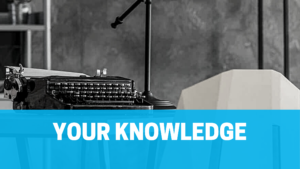The Fringe Benefits Tax (FBT) year ends on 31 March. We’ve outlined the hot spots for employers and employees.
FBT updates and problem areas
- FBT exemption for electric cars
- Work from home arrangements
- Contractor or employee
- Mismatched information for entertainment claimed as a deduction and what is reported for FBT purposes
- Employee contributions by journal entry
- Not lodging FBT returns
- Housekeeping essentials
Important FBT issues
FBT exemption for electric cars
To encourage the adoption of no or low emissions vehicles, the Government introduced a concession to make these vehicles FBT-free when provided to employees.
Employers that provide employees with the use of electric cars, hydrogen fuel cell electric cars or plug-in hybrid electric cars can potentially qualify for an exemption from FBT. This should normally be the case where:
- The value of the car is below the luxury car tax threshold for fuel efficient vehicles (which is $89,332 for 2023-24 financial year); and
- The car is both first held and used on or after 1 July 2022.
Working with the exemption
Even if the FBT exemption applies, your business will still need to work out the taxable value of the benefit as if the FBT exemption didn’t apply. This is because the value of the exempt benefit is still taken into account when calculating the reportable fringe benefits amount of the employee. While income tax is not paid on this amount, it can impact the employee in a range of areas (such as the Medicare levy surcharge, private health insurance rebate, employee share scheme reduction, and social security payments).
This means the employee’s own home electricity costs incurred on charging the electric vehicle would often need to be worked out. This figure can generally be treated as an employee contribution to reduce the value of the benefit.
While this can be practically difficult to determine, the ATO has now finalised a guideline providing a 4.20 cent per km shortcut rate that can potentially help with the calculation. These guidelines do not apply to plug-in hybrid vehicles.
Many electric vehicles are also packaged together with electric charging stations. Just be aware that the FBT exemption for electric cars does not extend to charging stations provided at the employee’s home.
Work from home arrangements
Many businesses continue to offer flexible work from home arrangements with team members working from home either on a full-time basis or for at least part of the work week.
Some businesses may have provided their employees with work-related items to assist their employees when working from home.
Portable electric devices such as laptops and mobile phones are commonly used for work. Providing such devices to your employees shouldn’t trigger a FBT liability, as long they are primarily used by your employees for work.
Where multiple similar items have been provided during the FBT year, the situation becomes more complex unless your business has an aggregated turnover of less than $50m (previously, this threshold was less than $10m).
If an FBT exemption isn’t available, it is often worthwhile instead considering whether the FBT liability of such items could be reduced to the extent the employee could claim a once-only deduction in their personal return (i.e., had they purchased the item themselves).
Contractor or employee
The FBT rules tend to apply when benefits are provided to employees and certain office holders, such as directors. FBT should not apply when benefits are provided to genuine independent contractors.
Following two landmark decisions handed down by the High Court, the ATO has now finalised a ruling TR 2023/4 that helps determine whether a worker is an employee or an independent contractor.
If the parties have entered into a written contract, then you need to focus on the terms of that contract to establish the nature of the relationship (rather than looking at the conduct of the parties). However, merely labelling a worker as an independent contractor doesn’t necessarily mean that they won’t be treated as an employee if the terms of the contract suggest that the parties have entered into an employment relationship.
The ATO has also finalised PCG 2023/2 that sets out four risk categories. While the ATO looks at a number of factors, arrangements will tend to be viewed in a more favourable light where:
There is evidence to show that you and the worker have agreed on the classification;
- There is a comprehensive written agreement that governs the relationship;
- There is evidence that you and the worker understand the consequences of the classification;
- The performance of the arrangement hasn’t deviated significantly from the terms of the contract;
- Specific advice has been sought confirming that the classification is correct; and
- Tax, superannuation, and reporting obligations have been met when the worker is classified as an employee or independent contractor (whichever relevant).
If your business employs contractors, you should have a process in place to ensure the correct classification of the arrangements and to determine the ATO’s risk rating. These arrangements should also be reviewed over time.
Even when a worker is a genuine independent contractor, just remember that this doesn’t necessarily mean that the business won’t have at least some employment-like obligations to meet. For example, some contractors are deemed to be employees for superannuation guarantee and payroll tax purposes.
Mismatched information for entertainment claimed as a deduction and what is reported for FBT purposes
One of the easiest ways for the ATO to pick up on problem areas is where there are mismatches.
When it comes to entertainment, employers are keen to claim a deduction but this can be a problem if it is not recognised as a fringe benefit provided to employees.
Expenses related to entertainment such as a meal in a restaurant are generally not deductible and no GST credits can be claimed unless the expenses are subject to FBT.
Let’s say you taken a client out to lunch and the amount per head is less than $300. If your business uses the ‘actual’ method for FBT purposes then there should not be any FBT implications. This is because benefits provided to client are not subject to FBT and minor benefits (i.e., value of less than $300) provided to employees on an infrequent and irregular basis are generally exempt from FBT. However, no deductions should be claimed for the entertainment and no GST credits would normally be available either.
If the business uses the 50/50 method, then 50% of the meal entertainment expenses would be subject to FBT (the minor benefits exemption would not apply). As a result, 50% of the expenses would be deductible and the business would be able to claim 50% of the GST credits.
Employee contributions by journal entry
Many businesses use after-tax employee contributions to reduce the value of fringe benefits.
It is also reasonably common for these contributions to be made by journal entry through the accounting system only (rather than being paid in cash).
While this can be acceptable if managed correctly, the ATO has a number of concerns in this area, including whether journal entries made after the end of the FBT year are valid employee contributions.
For an employee contribution made by way of journal entry to be effective in reducing the taxable value of a benefit, all of the following conditions must be met:
- The employee must have an obligation to make a contribution to the employer towards a fringe benefit (i.e., under the employee’s remuneration agreement);
- The employer has an obligation to make a payment to the employee. For example, the parties may agree that the employer will lend an amount to the employee or the employee might be entitled to a bonus that hasn’t been paid yet. If a loan is made by the employer then this could trigger further tax issues that need to be managed;
- The employee and employer agree to set-off the employee’s obligation to the employer against the employer’s obligation to the employee; and
- The journal entries are made no later than the time the financial accounts are prepared for the current year (i.e., for income tax purposes).
Failing to ensure that arrangements involving fringe benefits and employee contributions are clearly documented can lead to problems. For example, the ATO may ask to see evidence of the fact that the employer is actually under an obligation to make contributions towards a fringe benefit. If there is no evidence of this then significant FBT liabilities could arise.
Not lodging FBT returns
The ATO is concerned that some employers are not lodging FBT returns when required to.
If your business employs staff (even closely held staff such as family members), and is not registered for FBT, it’s essential to ensure that the position is reviewed to check whether the business could potentially have an FBT liability.
If the business provides cars, car spaces, reimburses private (not business) expenses, provides entertainment (food and drink), employee discounts etc., then you are likely to be providing at least some fringe benefits.
There is a list of benefits that are considered exempt from FBT, such as portable electronic devices like laptops, protective clothing, tools of trade etc. If your business only provides these exempt items, or items that are infrequent and valued under $300, then you are unlikely to have to worry about FBT.
Make sure you have reviewed the FBT client questionnaire we sent you!
Housekeeping
It can be difficult to ensure the required records are maintained in relation to fringe benefits – especially as this may depend on employees producing records at a certain time. If your business has cars and you need to record odometer readings at the first and last days of the FBT year (31 March and 1 April), remember to have your team take a photo on their phone and email it through to a central contact person – it will save running around to every car, or missing records where employees forget.



